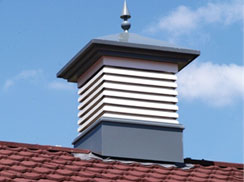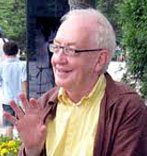 11th June 2013, Heriot Watt University
11th June 2013, Heriot Watt University
Post Graduate Centre, Room 201. Directions
Understanding Adaptive Thermal Comfort and Natural Ventilation is crucial to creating resilient buildings that use less energy. The morning workshop covers the principles of Adaptive Thermal Comfort while the afternoon focuses on natural ventilation and modelling. It is possible to register for either the morning workshop, the afternoon workshop or both.
- Morning Workshop Agenda: Adaptive Thermal Comfort: Avoiding Overheating, Fergus Nicol and Sue Roaf
- Afternoon Workshop Agenda: Design and Modelling For Natural Ventilation, Nick Hopper and Alex Brew
- Speaker Biographies
- Register
9.00am – 12.30pm: Adaptive Thermal Comfort: Avoiding Overheating, Fergus Nicol and Sue Roaf
9.00am Registration and Networking
9.30am The principals of Adaptive Thermal Comfort
- Why comfort?
- Comfort behaviour: comfort as product or goal
- Measuring and understanding comfort
- The meaning of Adaptive Thermal Comfort
- Can we calculate for comfort?
11.00am Tea and Coffee
11.15am Designing buildings for comfort and resilience
- Building form and function: materials, orientation and seasonal design
- Building services and adaptive opportunity
- Energy impacts of comfort and building design
- Overheating and its avoidance and natural ventilation
- What happens if the power fails?
12.30pm Break for Lunch (Not provided)
13.00pm – 4.30pm: Design and Modelling For Natural Ventilation, Nick Hopper and Alex Brew
1.00pm Registration and Networking
1.30pm The basic principles behind top down ‘wind tower’ natural ventilation
- The theory
- The advantages and disadvantages
- Where is the technology best suited
Development of the systems since the 1980s to the current product
- The pioneering years
- The lessons learnt
- Balancing the aesthetic, utility and commercials
- The introduction of Sola-Boost
- Recent weather changes in the UK leading to water ingress
- The product design changes leading up to a system with actuated louvres
- Evolution of the controls strategy
3.00pm Tea and Coffee
3.15pm Modelling Windcatchers
- The development of modelling
- Quantifying the performance of natural ventilation systems
- Collaboration with IES
- IES Windcatcher Performance Components
- Example Case Studies
The future
- What do we see as the future of natural ventilation?
- Where do we see the market developing?
- Hybrid systems
4.30pm End
About Sue Roaf
 Susan Roaf is Professor of Architectural Engineering at Heriot Watt University and works on a range of Low Carbon Building and Climate Adaptation projects. She is best known for her pioneering Oxford Ecohouse, with the first photovoltaic roof in Britain. The house was designed for future climates and she will be sharing the wide range of ‘future-proofing features incorporated into it. A key political aim is not to build ‘resilience’ into communities, a term generally taken to mean that people can ‘bounce back’ after catastrophic events, including heatwaves, storms, cold snaps and floods. She works with the Initiative for Carbon Accounting; the Adaptation team of the Scottish Centre of Expertise in Climate Change and is on the board of the Resilient Design Institute in New York.
Susan Roaf is Professor of Architectural Engineering at Heriot Watt University and works on a range of Low Carbon Building and Climate Adaptation projects. She is best known for her pioneering Oxford Ecohouse, with the first photovoltaic roof in Britain. The house was designed for future climates and she will be sharing the wide range of ‘future-proofing features incorporated into it. A key political aim is not to build ‘resilience’ into communities, a term generally taken to mean that people can ‘bounce back’ after catastrophic events, including heatwaves, storms, cold snaps and floods. She works with the Initiative for Carbon Accounting; the Adaptation team of the Scottish Centre of Expertise in Climate Change and is on the board of the Resilient Design Institute in New York.
About Fergus Nicol
 Fergus Nicol is best known for his work in the science of human thermal comfort, principally for in ‘adaptive’ approach to thermal comfort. He has run a number of projects funded by UK and European funding agencies including the EU project Smart Controls and Thermal Comfort (SCATs) which is the basis of the European Standard (EN15251) for comfort. Fergus teaches at London Metropolitan University. He has authored and co-authored numerous journal articles and other publications including the first of a trilogy on Adaptive Thermal Comfort which he is writing with Michael Humphreys and Sue Roaf. He is convener of the Network for Comfort and Energy use in Buildings. He is a member of the CIBSE task force on overheating in buildings and is first author of their Technical Memorandum (TM52) and co-editor of human requirements chapter of their Guide A.
Fergus Nicol is best known for his work in the science of human thermal comfort, principally for in ‘adaptive’ approach to thermal comfort. He has run a number of projects funded by UK and European funding agencies including the EU project Smart Controls and Thermal Comfort (SCATs) which is the basis of the European Standard (EN15251) for comfort. Fergus teaches at London Metropolitan University. He has authored and co-authored numerous journal articles and other publications including the first of a trilogy on Adaptive Thermal Comfort which he is writing with Michael Humphreys and Sue Roaf. He is convener of the Network for Comfort and Energy use in Buildings. He is a member of the CIBSE task force on overheating in buildings and is first author of their Technical Memorandum (TM52) and co-editor of human requirements chapter of their Guide A.
About Nick Hopper
 A graduate in Product Design from the University of Southampton, Nick joined Monodraught as a design engineer in 1996. During this time Nick has gained a vast amount of experience in both the design of a natural ventilation schemes using thermal dynamic modelling software and to continually take advantage of the latest manufacturing innovations for new product development within this highly specialised field.
A graduate in Product Design from the University of Southampton, Nick joined Monodraught as a design engineer in 1996. During this time Nick has gained a vast amount of experience in both the design of a natural ventilation schemes using thermal dynamic modelling software and to continually take advantage of the latest manufacturing innovations for new product development within this highly specialised field.
Since becoming Technical Director in 2008 Nick has implemented the latest incarnation of the Windcatcher® top down ventilation terminals, the launch of natural ventilation components into IES and is currently working on the Cool-Phase® Phase Change Material low energy hybrid ventilation and cooling system.
About Alex Brew
 After spending time at Monodraught as a student on a work placement, Alex returned to the company full time in 2011 on completion of his Architectural Environment Engineering degree at Nottingham University. As the Technical Consultant for London, one of Alex’s key areas of expertise is natural ventilation design using the IES software for which he supports consultant and architectural practices. Alex is one of the architects of the new Performance Components Features within the VE Pro suite which allows users of the system to imbed Windcatcher® natural ventilation terminals within buildings using a simple ‘drag and drop’ process.
After spending time at Monodraught as a student on a work placement, Alex returned to the company full time in 2011 on completion of his Architectural Environment Engineering degree at Nottingham University. As the Technical Consultant for London, one of Alex’s key areas of expertise is natural ventilation design using the IES software for which he supports consultant and architectural practices. Alex is one of the architects of the new Performance Components Features within the VE Pro suite which allows users of the system to imbed Windcatcher® natural ventilation terminals within buildings using a simple ‘drag and drop’ process.
